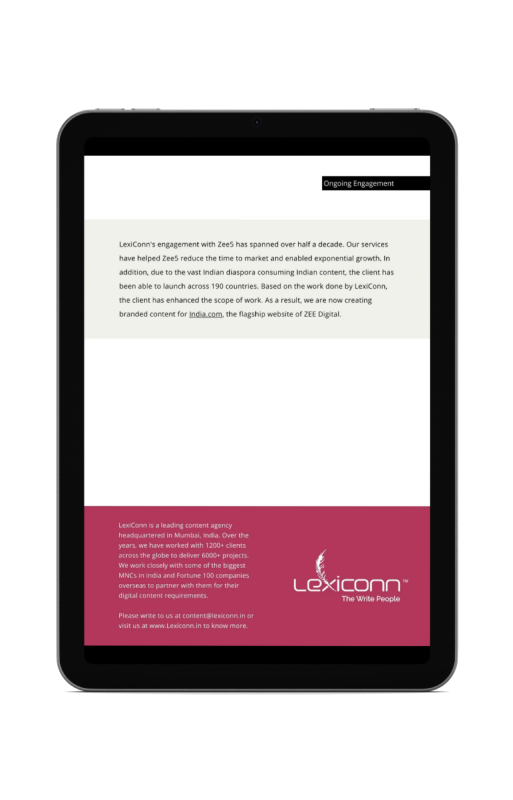Source
In today’s digital-first world, your website is the face of your business. It's often the first point of contact with potential customers, making it critical for generating leads, establishing credibility, and driving conversions. However, just having a website isn’t enough. To effectively convert visitors into customers, your website needs to be optimized for both traffic and conversions. Unfortunately, many websites suffer from common website mistakes and fixes that can silently hurt both user experience and search engine rankings.
From slow loading speeds to poor mobile experiences, website issues often go unnoticed, draining both leads and revenue. The impact of these issues isn’t just about a poor experience for users; it can also negatively affect your website performance in search rankings, leading to reduced traffic and, ultimately, lower conversions.
In this article, we’ll explore the top 10 website issues that could be holding your business back and provide in-depth solutions to fix them. By addressing these issues, you'll be well on your way to improving both conversion optimization and overall website success.
1. Slow Loading Speed: Why Website Issues Hurt Conversions
Website speed plays a pivotal role in user experience and conversion rates. If your site is slow, visitors may not even wait around long enough to explore your offerings. In fact, studies show that just a one-second delay in page loading time can reduce conversions by up to 7%. Moreover, Google’s Core Web Vitals have made page speed a ranking factor, meaning slow-loading websites will find themselves slipping in search engine rankings, resulting in decreased visibility and traffic.
Why It Happens:
- Unoptimized images: Large, uncompressed images significantly slow down page load times.
- Excessive HTTP requests: Every resource loaded (like scripts, stylesheets, and images) adds a delay.
- Poor server performance: If the server hosting your website is slow or unreliable, your website’s performance will suffer.
- Unminified CSS and JavaScript: Large, unminified files can increase the size of your web pages, causing them to load slower.
- Lack of caching mechanisms: Without caching, your website has to load the same resources every time a user visits.
How to Fix It:
- Optimize images: Use tools like TinyPNG to compress images, and consider switching to more efficient formats like WebP.
- Enable browser caching: Leverage Content Delivery Networks (CDNs) to distribute the server load and reduce delays.
- Minify CSS, JavaScript, and HTML files: By removing unnecessary spaces and characters, you can reduce file sizes and speed up load times.
- Use fast hosting: Choose a hosting provider that prioritizes speed and has a robust server infrastructure.
- Implement lazy loading: This technique ensures that images and videos only load when they come into the user’s viewport.
- Reduce third-party scripts: Unnecessary third-party services can drastically slow down your website. Audit and remove any that aren't essential.
Regularly testing page speed using tools like Google PageSpeed Insights or GTmetrix can help you spot areas for improvement.
2. Mobile Unfriendliness: A Major Barrier to Conversions
With more than 60% of web traffic coming from mobile devices, it’s crucial to ensure your website is optimized for mobile viewing. A site that isn’t mobile-friendly will likely lose a significant portion of its potential audience, leading to poor conversion optimization.
Common Issues:
- Non-responsive design: A design that doesn’t adjust to different screen sizes can make navigating your site on mobile devices frustrating.
- Small text and buttons: Text that’s too small to read or buttons that are difficult to tap lead to a poor mobile experience.
- Slow loading times: Mobile users often experience slower load times, especially if the site has unoptimized scripts or heavy media files.
- Intrusive pop-ups: Pop-ups that take up too much screen space or are hard to close ruin the user experience on mobile devices.
How to Fix It:
- Use responsive web design: Ensure that your website adapts to different screen sizes for an optimal viewing experience across all devices.
- Run mobile-friendly tests: Use Google’s mobile-friendly tool to identify areas for improvement.
- Optimize touch elements: Ensure that buttons and links are large enough for easy tap navigation.
- Avoid intrusive pop-ups: Pop-ups should be minimized or eliminated on mobile to prevent disruption.
- Enable Accelerated Mobile Pages (AMP): AMP helps your site load faster on mobile devices by simplifying the HTML and reducing the number of elements that need to load.
By ensuring a seamless mobile experience, you’ll reduce bounce rates and increase your chances of converting visitors into customers.
3. Poor Website Navigation: Making It Easy to Convert
If users can’t easily find what they’re looking for, they’ll quickly become frustrated and leave your site. Confusing navigation is one of the most common website issues that can significantly hurt your conversion optimization.
How to Improve Navigation:
- Simplify your menu structure: Keep your menu options clear, concise, and easy to navigate. Limit the number of options to avoid overwhelming users.
- Use breadcrumb navigation: Breadcrumbs show users where they are on your site and how to navigate back.
- Include a search bar: A prominent search bar allows users to quickly find the content or product they’re looking for.
- Optimize internal linking: Make it easy for users to explore other relevant content or products on your site.
- Implement sticky navigation: Keeping the main navigation visible while scrolling enhances the user experience and makes navigation more accessible.
Good navigation keeps users engaged and guides them through the conversion funnel.
4. Broken Links & 404 Errors: User Experience and SEO Impact
Broken links are one of the biggest SEO errors and can significantly disrupt the user experience. Visitors who encounter 404 error pages will quickly become frustrated, resulting in higher bounce rates and fewer conversions.
Fixing Broken Links:
- Regularly audit links: Use tools like Google Search Console or Screaming Frog to identify and fix broken links.
- Set up 301 redirects: If a page has been removed, set up a 301 redirect to guide visitors to a relevant page.
- Customize 404 error pages: Instead of a generic 404 page, customize the error page with helpful navigation options to guide users back to functional pages.
- Update outdated links: Regularly review your content to ensure all links remain up to date.
- Use internal linking strategies: Guide users to alternative pages with relevant internal links when a page is no longer available.
By addressing broken links and 404 errors, you’ll improve both user satisfaction and SEO performance, which can boost conversions.
5. Lack of Clear CTAs: Turning Visitors Into Customers
A website without clear and compelling calls to action (CTAs) will miss valuable opportunities for conversion optimization. If visitors don’t know what to do next, they’re likely to leave your site without taking action.
How to Improve CTAs:
- Make them action-driven: Use clear, direct language such as “Get Started” or “Buy Now” to prompt users to take the next step.
- Use contrasting colors: Make CTAs stand out visually to catch the user’s attention.
- Position CTAs above the fold: Ensure that users don’t have to scroll too far to see important CTAs.
- A/B test CTAs: Test different styles, colors, and placements to see which CTAs drive the best results.
- Personalize CTAs: Tailor CTAs based on user behavior, location, or previous interactions with your site to make them more relevant.
A strong CTA can be the difference between a bounce and a conversion, so it’s crucial to make your CTAs as clear and compelling as possible.
6. Poor Content Structure & Readability: Engaging Your Audience
The structure and readability of your content are vital for keeping visitors engaged and encouraging them to take action. A wall of text or poor formatting can make your content difficult to digest and turn potential leads away.
Best Practices for Readability:
- Use short paragraphs and bullet points: Break up large chunks of text into smaller, more digestible sections.
- Include subheadings: Subheadings help users quickly scan content and find the information they’re looking for.
- Choose easy-to-read fonts: Use simple, legible fonts with ample line spacing to enhance readability.
- Optimize content hierarchy: Clearly organize your content with headings, subheadings, and paragraphs to make it easier for users to follow.
- Use bold and italic highlights: Emphasize key points to help users skim and find critical information quickly.
A well-structured website encourages visitors to stay longer and engage more with your content, which can ultimately lead to higher conversions.
7. Weak Technical SEO: A Hidden Barrier to Success
While technical SEO may not be visible to users, it plays a critical role in improving your website’s search engine rankings. SEO errors like missing meta tags, duplicate content, and improper indexing can negatively impact your website’s visibility, resulting in lower organic traffic and fewer conversions.
How to Optimize Technical SEO:
- Write compelling meta descriptions and titles: Ensure your meta titles and descriptions are well-crafted, keyword-optimized, and enticing to users.
- Implement structured data: Structured data helps search engines understand your content better, leading to better visibility in search results.
- Fix duplicate content: Use canonical tags to address duplicate content issues and prevent search engines from penalizing your site.
- Ensure proper indexing: Make sure your website’s pages are being correctly indexed by search engines by checking your robots.txt file and XML sitemap.
- Optimize XML sitemaps: Ensure your sitemap is up to date and includes all important pages.
- Implement hreflang tags: For multilingual websites, hreflang tags ensure that the right content is shown to users based on their language preferences.
By addressing technical SEO issues, you’ll increase your search engine visibility, bringing in more traffic and opportunities for conversions.
8. Ineffective Lead Capture Forms: Converting Visitors Into Leads
Lead capture forms are essential for collecting information from potential customers. However, poorly designed forms can frustrate users, leading to abandoned submissions and missed opportunities.
How to Improve Forms:
- Keep forms short: Only ask for essential information to increase the likelihood of users completing the form.
- Use multi-step forms: Breaking down longer forms into smaller steps can reduce user friction and improve engagement.
- Enable autofill: This feature allows users to automatically fill in their details, making the process quicker and easier.
- Add progress indicators: Long forms should include progress bars to inform users of how far they’ve come.
- Ensure privacy and trust: Add a clear privacy policy and reassure users that their information is safe.
An optimized lead capture form ensures a smoother conversion process and helps you collect valuable data for future marketing efforts.
9. Security Issues (No HTTPS): Building Trust and Boosting Conversions
In today’s digital landscape, security is paramount. A website without HTTPS looks untrustworthy to visitors and can harm both your conversion rates and SEO.
Fixing Security Issues:
- Install an SSL certificate: An SSL certificate enables HTTPS, which encrypts user data and builds trust.
- Regularly update plugins and security patches: Keeping your website’s software up to date is crucial for protecting against vulnerabilities.
- Use firewalls and anti-malware tools: Protect your website from malicious attacks and data breaches with advanced security tools.
- Conduct regular security audits: Regular checks ensure that your website remains secure and up to date.
- Implement two-factor authentication (2FA): Adding an extra layer of security helps protect user accounts.
Security issues can seriously undermine trust and conversions, so make sure your website is fully secure and up to date.
10. Unoptimized Images & Media: Improving Page Speed and SEO
Large, unoptimized media files can slow down your website and negatively impact SEO performance. Slow-loading images and videos hinder the user experience, which can lead to higher bounce rates and lower conversions.
Optimizing Media:
- Compress images: Use tools like TinyPNG or ShortPixel to reduce image file sizes without sacrificing quality.
- Use next-gen formats: Switching to modern image formats like WebP can improve loading speeds.
- Implement lazy loading: Ensure that images and videos load only when they are visible on the screen, reducing initial page load time.
- Host videos externally: Instead of hosting videos directly on your website, use platforms like YouTube or Vimeo to offload the media.
- Use adaptive image resizing: Serve appropriately sized images based on the user's device screen size.
By optimizing your media files, you’ll enhance both your page speed and SEO, which in turn will improve conversion optimization.
Final Thoughts
Website issues can have a significant impact on both user experience and conversion optimization. By addressing common problems like slow loading speeds, poor mobile experiences, broken links, and ineffective CTAs, you can create a smoother, more efficient website that drives higher engagement and conversions. Regular audits and staying updated with SEO best practices will help keep your site performing optimally.
If you’re facing website issues that are hindering your website performance or SEO success, consider partnering with a trusted digital marketing agency like LexiConn. Our expert team specializes in content strategy, technical SEO, and website optimization to help businesses achieve their digital goals. Contact us today to take your website to the next level!
Boost your Content Strategy.
Download the Free eBook now.
Unlock Generative AI's potential for content marketing success. Unearth its impact on teams and businesses. Witness real-life examples and case studies, showcasing AI-driven content ingenuity.





